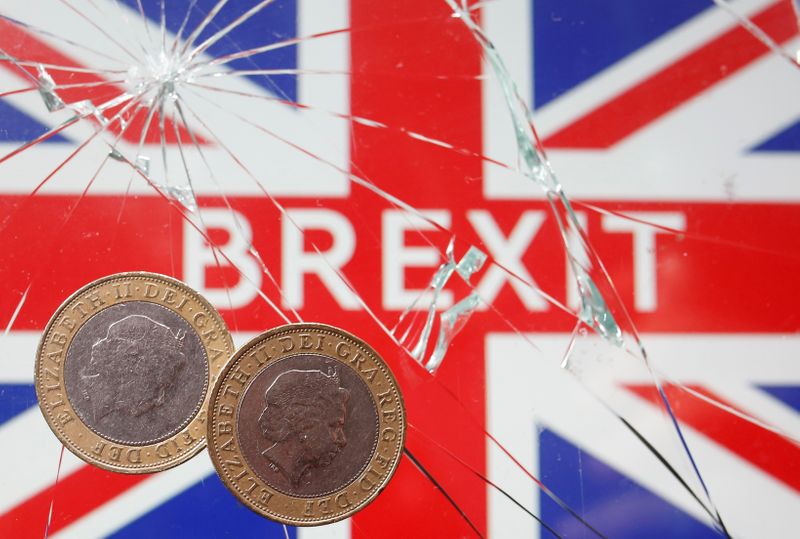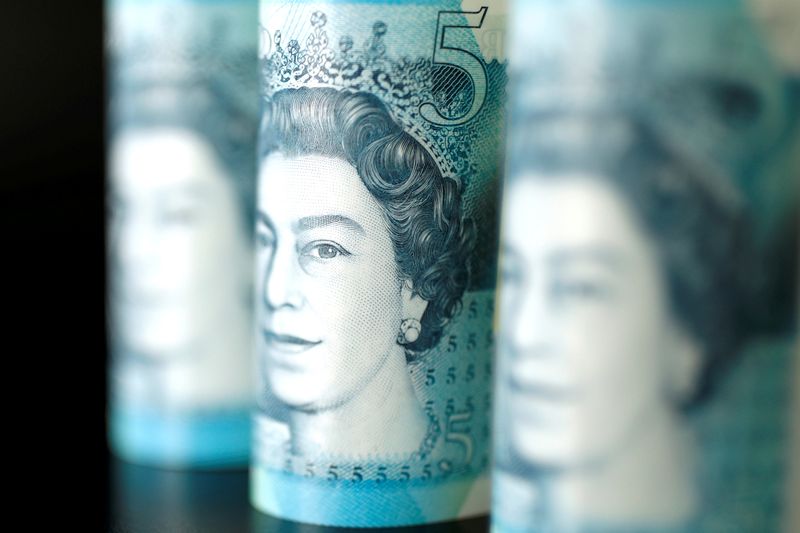By Tommy Wilkes and Saikat Chatterjee
LONDON (Reuters) - Britain may be heading for a no-deal Brexit in three months, but among traders in London the feeling so far is one of deja vu rather than a panicky rush to dump UK assets.
After Britain threatened to ditch parts of its European Union divorce deal this month, markets are pricing in a 40%-45% chance of exiting the EU trading bloc without any alternative arrangements at the end of 2020. Some banks see it higher.
Yet as the four-year political crisis between London and Brussels enters what may be its final stretch, investors and companies are not stampeding as heavily to sell sterling or hedge against volatility as they did when no-deal Brexit risks intensified in the past.
"Brexit fatigue is definitely there. Coronavirus has overwhelmed Brexit. Participation levels are still relatively light and it's generally opportunistic," said Ian Tew, a sterling trader at Barclays (LON:BARC) in London.
Cash sterling weekly turnover rose 35% in the third week of September from late August, Refinitiv data shows -- but is below most weeks in September and October in 2019 and 2018, when worries about a no-deal Brexit intensified before deadlines to reach earlier agreements with the EU.
True, sterling has fallen 5.8% this month from $1.3481
The pound is well above last September's low of $1.1959.
Against the euro, sterling's drop has been more measured, with the euro rising 2.8% to 91.50 pence (EURGBP=D3) this month.
Derivatives are pricing in more choppiness ahead, with implied volatility jumping to the highest level since the coronavirus panic of March and April
That rise must be seen also in the context of higher market-wide volatility in 2020 <.DBCVIX>.
Graphic - Three-month sterling/dollar implied volatility: https://fingfx.thomsonreuters.com/gfx/mkt/bdwvkkzyzvm/sterling%20dollar.PNG
LESS GROUP THINK
Richard Benson, head of portfolio investments at currency asset manager Millennium Global Investments, is short sterling and thinks trading activity is being dampened by more investors and traders working from home.
"There's slightly less group think. Less of the group endorsement of 'Oh, we are all doing this, this is the trade'," he said, adding that at a recent virtual industry roundtable the numbers of people short sterling were balanced by those long.
Another explanation, traders say, is that COVID-19 is overshadowing Brexit in the minds of investors and company executives.
For instance, exporters who would usually adjust currency hedges after a pound slump have seen those strategies upended by collapsing revenues. Coronavirus uncertainty could even force a change to the Dec. 31 deadline.
"The market has become very jaded with the political process," said Simon Manwaring, head of currencies trading at NatWest Markets, and "is looking for something more definitive" before clients hedge or take speculative positions.
Aaron Hurd, senior currency portfolio manager at State Street (NYSE:STT) Global Advisors, believes the two sides will reach a Brexit deal and wants to buy more pounds. But he is holding off as everyone tries to discern "how much of the political noise and the headline noise is posturing...And how much of it is real disagreement behind the scenes."
NERVES GROW
Still, while activity levels suggest there is not the panic of previous years, nerves are beginning to jangle.
Demand for put options - the right to sell sterling - has increased significantly, with three-month risk reversals
That suggests investors are increasingly worried about further drops in the British currency.
For traders wanting protection from a falling pound, a price move probability of 11% is now priced into option contracts with a November and December expiry, up from 9.4% in early September, according to CME data.
The question is whether such nervousness translates into more aggressive selling.

"Brexit was front and centre of everything in the past. Now it's not," said Barclays' Tew, although it remained a "differentiating factor" that would keep the pound vulnerable.
